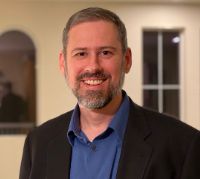Collaborative $9M UC San Diego Award Aimed at Sparking Fusion Energy Breakthrough
Story by:
Published Date
Article Content
In a pioneering initiative, universities, industry leaders, and national laboratories are banding together to accelerate the development of fusion energy. Funded by the Department of Energy (DOE) and powered by a $9 million budget over four years, the project named SMARTS (Surrogate Models for Accurate and Rapid Transport Solutions) aims to pave the way for more efficient and reliable fusion reactor performance prediction.
Funded as part of the DOE's $112 million in awards to the Scientific Discovery through Advanced Computing (SciDAC) program, SMARTS brings together a consortium of institutions including University of California San Diego, Massachusetts Institute of Technology (MIT), General Atomics, Sapientai, Kalling Software, Oak Ridge National Laboratory, and Sandia National Laboratory.

At the helm of this ambitious endeavor is principal investigator Chris Holland of UC San Diego’s Center for Energy Research, spearheading a team that employs cutting-edge techniques from data science and machine learning domains.
The team aims to develop surrogate models to effectively enhance the accuracy and speed of predicting fusion reactor performance.
"This collaboration is a game-changer," said Chancellor Pradeep K. Khosla. "By bridging academia, industry, and national labs, we're pushing the boundaries of fusion research like never before in a way that highlights the interdisciplinary collaboration embedded in the DNA of UC San Diego."
The project's kickoff meeting, scheduled for February 27-29 on UC San Diego’s campus, will include members from related SciDAC projects, fostering a cross-pollination of ideas to accelerate progress toward the first-year milestones.
“The ability of UC San Diego researchers to forge new tools in this field has been astounding. Our ability to collaborate broadly across disciplines, interact with industry partners and create a pipeline of job opportunities magnifies federal investments like this and opens the door to unparalleled discovery,” said Corinne Peek-Asa, Vice Chancellor for Research and Innovation.
Jan Kleissl, a mechanical and aerospace engineering professor at the Jacobs School of Engineering, directs the Center for Energy Research.
"In plain English, SMARTS aims to deliver the modeling tools needed to make accurate and timely predictions of how much fusion power a plasma can produce," Holland explained. "By leveraging the US fusion program’s world-leading plasma simulation codes, advanced computing and machine learning, we're unlocking faster, more accurate predictions crucial for the future of fusion energy."
With fusion energy’s potential as a solution to global energy needs, initiatives like SMARTS underscore the power of collaboration in driving scientific innovation forward. As the project gains momentum, it sets the stage for a brighter, cleaner energy future.
Share This:
You May Also Like
Moving Data to the Speed of Light: Polaris Electro-Optics Rides the Wave of the Future
Technology & EngineeringStay in the Know
Keep up with all the latest from UC San Diego. Subscribe to the newsletter today.




